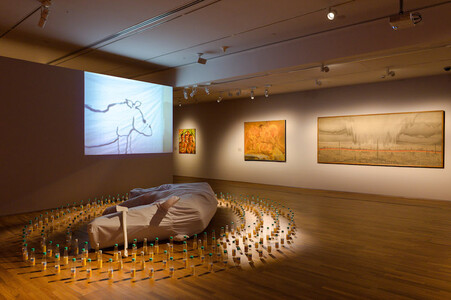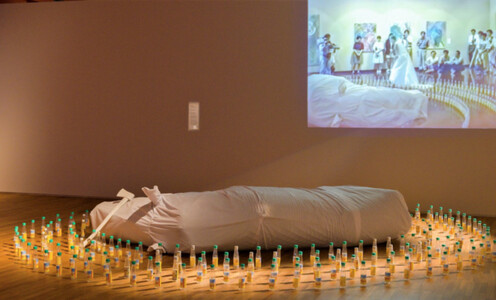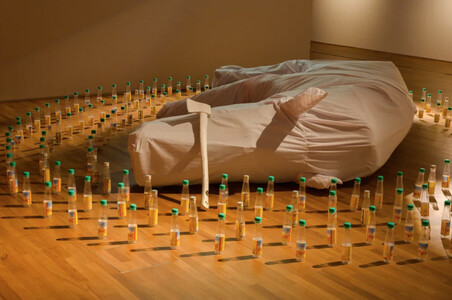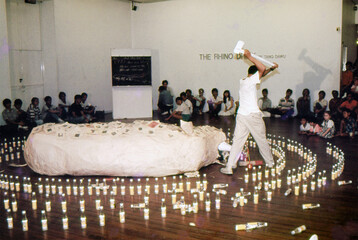Group Exhibition The National Museum of Modern Art, Tokyo, Japan
Awakenings: Art in Society in Asia 1960s–1990s examines the powerful role that artists across Asia played during one of the region’s most turbulent periods. The Cold War was one of many global movements that intersected with a constellation of regional and local contexts. The Vietnam War for instance was among a series of proxy wars waged in Southeast Asia leading to millions of deaths. The impact of these wars, along with changes within Asia due to rapid modernisation, the rise of nationalism, student activism, and democratic movements led to massive social upheavals in the region.
“Awakenings,” the title of this exhibition, refers to the emergence of a political consciousness amongst artists across Asia in response to this turmoil. They sought to radically change society, challenging authoritarian strictures and aesthetic conventions through their artworks. This exhibition draws connections between avant-garde art practices in Cambodia, China, Hong Kong, India, Indonesia, Japan, Malaysia, the Philippines, Singapore, South Korea, Taiwan, and Thailand, thereby transcending national frameworks.
The exhibition in Singapore will feature a significant selection of works from Southeast Asia, exploring the intersections of experimental practices in the region, and their social and political contexts, with the rest of Asia and beyond. Tang Da Wu’s seminal work, They Poach the Rhino, Chop Off His Horn and Make This Drink (1989) will be exhibited for the first time since its acquisition by the Gallery. Other major works include Reptiles (1989, remade in 2013) by Huang Yong Ping and Eceng Gondok Berbunga Emas (Water Hyacinth with Golden Roses) (1979, remade in 2017 and 2019) by Siti Adiyati.
More Pictures:
Aesthetic Radicalism in ‘Awakenings’ at Singapore’s National Gallery | Ocula
Bridging the Diverse Foundations of 20th-Century Asian Art | Hyperallergic






